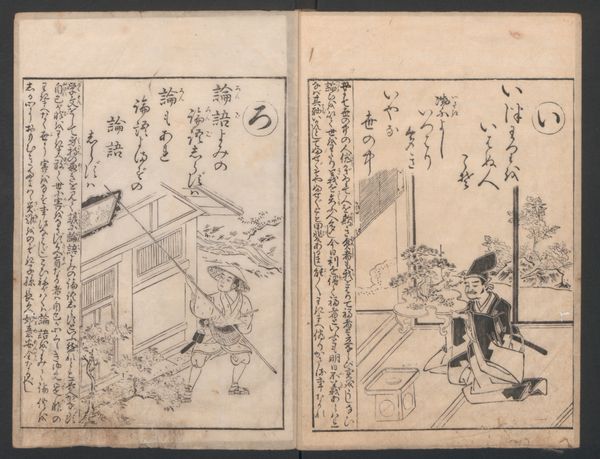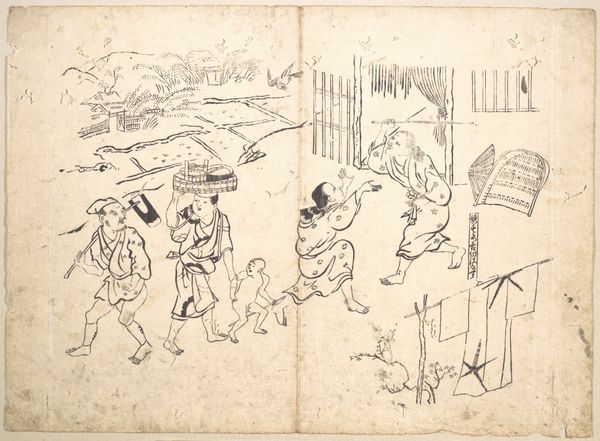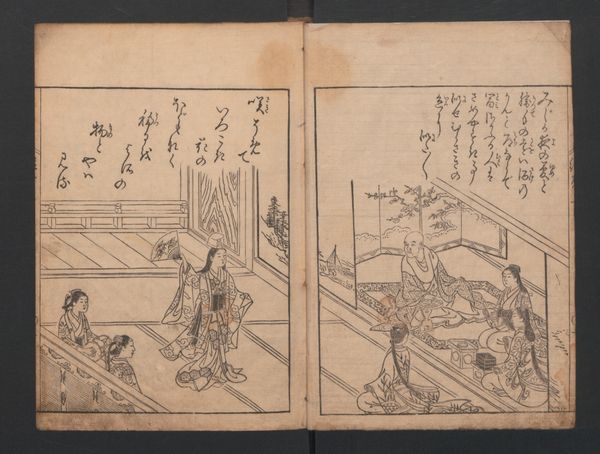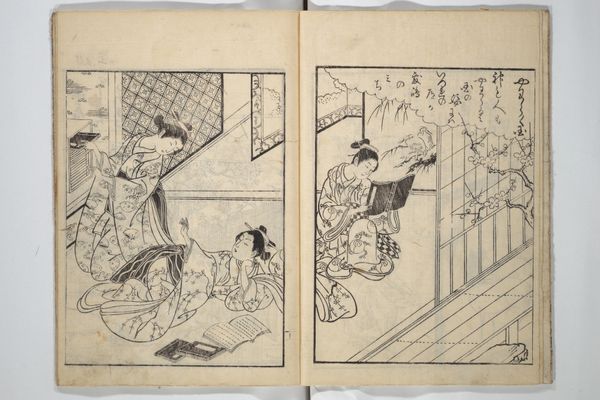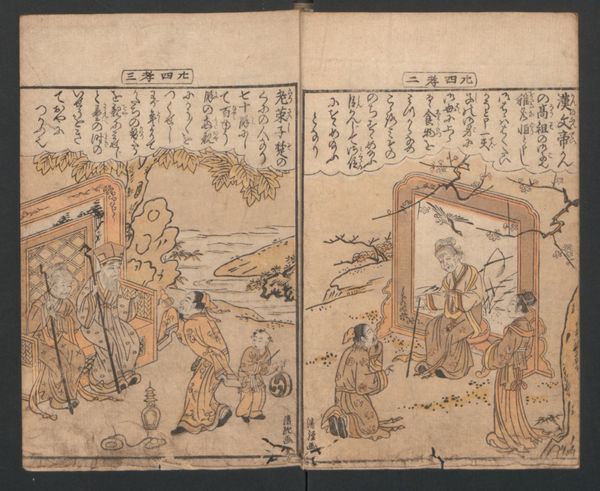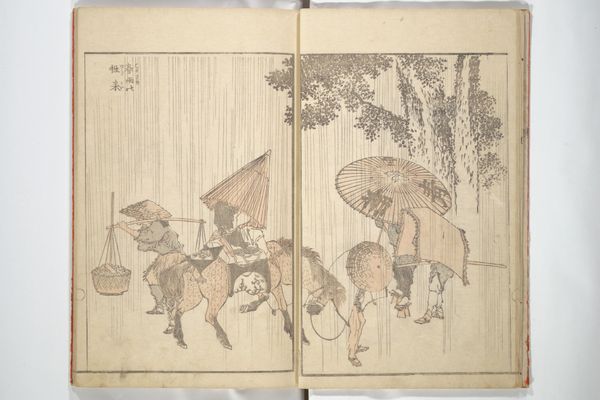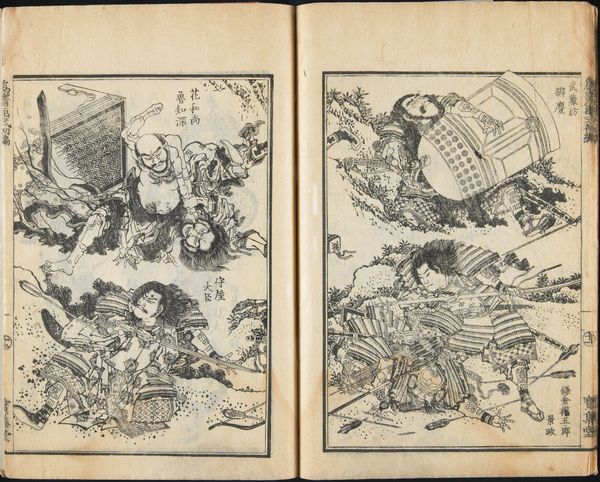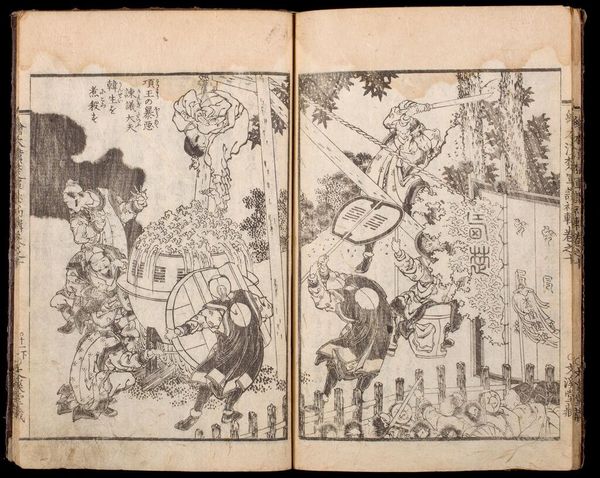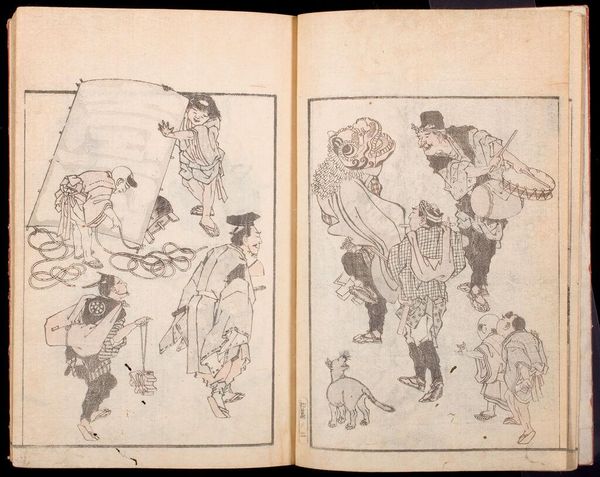
drawing, paper, ink
#
drawing
#
narrative-art
#
asian-art
#
landscape
#
ukiyo-e
#
figuration
#
paper
#
ink
#
genre-painting
Dimensions: Overall (vols. 1–3 each): 10 1/16 × 6 7/8 in. (25.6 × 17.5 cm)
Copyright: Public Domain
Curator: This is a page from the Itchō Picture Album, or Itchō gafu, dating back to 1770, crafted by Hanabusa Itchō, presently housed in the Metropolitan Museum of Art. Editor: Immediately, the stark contrast of ink on paper captures the eye; it's almost like a blueprint. The linear details guide you through the bustling scenes, evoking a strong sense of—well, dampened activity, considering the driving rain. Curator: Indeed. Itchō, known for his contributions to the Ukiyo-e movement and genre painting, offers us more than just aesthetic pleasure; he invites a cultural exploration of Edo-period life. Observe how the social dynamics, class distinctions, and everyday rituals are subtly encoded. For instance, note the individuals carrying heavy loads contrasted with those sheltered under the eaves, engaged in leisurely activities. Editor: The composition seems intentionally divided, too. We have almost two distinct vignettes—a stark horizontal split right down the album’s center. On one side, the driving rain; the other, implied shelter. I wonder what semiotic play the artist intended. Rain can cleanse, renew, but here, it's a stark divider. Curator: Precisely. The division serves as a potent visual metaphor for the inequalities of the time. Also, it invites a dialogue about the agency and resistance of those marginalized in Japanese society. Note the ambiguous figure peeking out of the tree, which could be seen as an element of mischievous folkloric intervention, perhaps highlighting how marginalized individuals had a chance to rebel against class order, while maintaining discretion. Editor: And yet, formalism reminds us this narrative is still facilitated by the strength of the linework and distribution of tones, which guide our eye. Look at the use of diagonal strokes to indicate rain, offset against the calmer horizontals under the shelter; it creates a satisfying visual rhythm, one could suggest even while oppressed. Curator: The album, as a whole, is an intersectional tableau waiting to be unlocked. Each page invites examination, peeling away layers of historical and social stratification to understand identity within the broader Edo context. Editor: Ultimately, these compositions—through masterful strokes—give even commonplace activities, such as sheltering from rain, enduring power that stretches across the centuries.
Comments
No comments
Be the first to comment and join the conversation on the ultimate creative platform.
